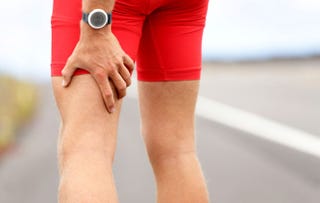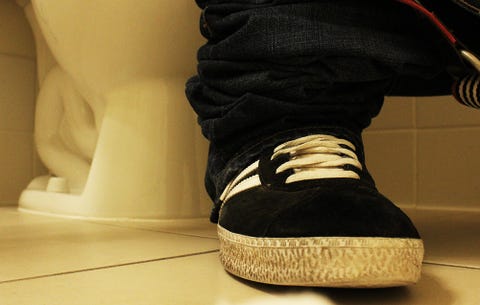Home » Diet & Food »
On Keto? Here Are 4 Signs Your Body's Burning Fat

If you spend any time reading weight loss transformations or perusing nutrition-focused Instagram accounts, you’ve likely seen people rave about the ketogenic diet: a high-fat, moderate-protein, and low-carb plan that can help you lose weight.
The aim of the diet is to achieve ketosis, which is when your body switches to burning fat for fuel instead its typical energy source, carbohydrates.
Generally, our bodies are fueled by glucose in the form of carb-y foods like flour, grains, vegetables, and fruit. But when you drastically reduce your carb intake on the keto diet, your body fuels itself on stored fat, instead. Your liver uses the fat to make acids called ketones, and these ketones are released back into your bloodstream and are used for energy.

Shutterstock
But achieving ketosis isn’t always easy, says Registered Dietitian Melanie Boehmer of Lenox Hill Hospital.
“Sometimes people try and teeter into it and they won’t lower their carbohydrates enough,” she explains to Men’sHealth.com. Or, dieters will lower carbs, but have a cheat day, which takes them out of ketosis. She advises sticking with 20-30 grams of carbohydrates per day in order to maintain the ketogenic state.
But how will you know when you’ve reached this fat-burning mode? Thankfully, there are some common signs of ketosis to look out for.
These signs tend to appear within two weeks of your body entering ketosis, but if you’re following the diet properly, they shouldn’t last long. Once your body has adapted to its new fat-burning state, the signs should fade away. If any of them hang around for longer than three weeks, it could be an indicator you’re eating too many carbs and going in and out of ketosis.
Here are four common signs of ketosis:
1. You’re plagued with smelly breath and BO
Ketosis may be good for your waistline, but it could be bad for your social life — at least in the short-term — as it causes bad breath and smellier sweat.
Your body creates byproducts when it breaks down fat to use for energy, one of which is acetone — yes, the same acetone found in nail polish remover. This waste is eliminated through urine, sweat, and breath, Boehmer says. So how bad is the scent?
“It’s described as a fruity smell, but not in a good way,” says Boehmer.
Until the smell fades away, our expert advises frequent teeth brushing and popping sugar-free mints.

Getty Images
2. You’re just way too tired for life
As your body gets accustomed to its new low-carb ways, you’ll probably feel fatigued. Boehmer recommends avoiding strenuous activity the first few weeks while your body gets acclimated to burning fat for fuel.
“Back off and keep it low impact,” she says. “Deciding to run a half marathon as you are trying to enter ketosis is probably not the best idea.”
After two weeks, you should begin to feel more energetic and have no problem with picking up your usual fitness routine.

Shutterstock
3. You develop cramps
Lowering carbohydrates can throw your electrolyte and mineral balance out of whack, meaning you could have a deficiency in potassium, sodium, and magnesium, Boehmer explains. All three help prevent cramping, so you may experience some pain without them.
While many keto fanatics are excited about dining on decadent foods like cheese and bacon, the dietitian says it’s important to eat plenty of nuts, seeds, avocado, leafy greens, and fatty fish to ensure you’re getting enough minerals.

Getty Images
4. You have trouble pooping
Keto dieters are typically constipated for two reasons. First, they’re not consuming fiber-filled foods, like oatmeal, that are carb heavy but keep you regular. Second, carbohydrates are converted into glycogen — which has high water content — to be used as energy; when you’re not eating carbs, the amount of water in your system is decreased, making it harder to poop.

Getty Images
The best way to combat this is by making the most of the carbohydrates you do consume.
“You should be getting carbohydrates from non-starchy vegetables and things that have lots of fiber,” Boehmer says. Cauliflower, broccoli, and leafy greens are all good picks.
Boehmer says the best way to minimize these unpleasant side effects is by staying consistent.
“If you’e going to commit to this, you need to fully commit,” she says. “Keep your carbs between 20 and 30 grams [per day].”
Source: Read Full Article



